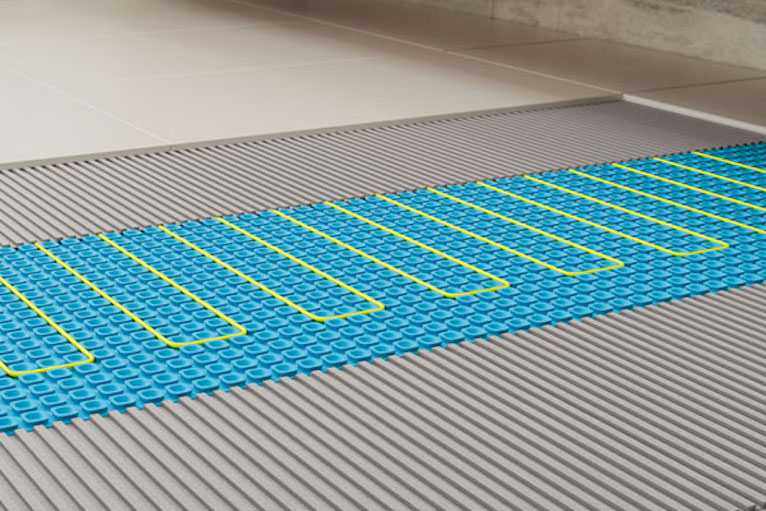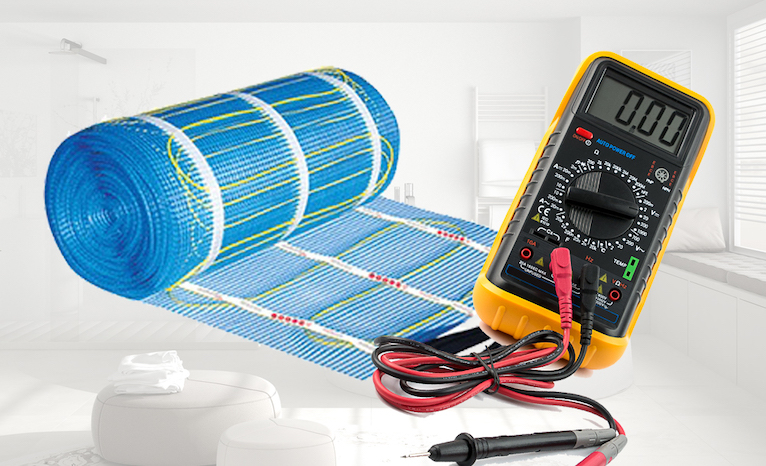How to become a number 1 electric underfloor heating installer
Electric underfloor heating is becoming more popular than gas, due to changes in SAP calculations and the Government’s announcement to ban gas boilers in all new builds by 2025. Plus, electric underfloor heating provides greater design freedom by freeing wall space, making it appealing to homeowners and architects. With demand rising, now is the time to push for the number one spot as an electric underfloor heating installer.
Becoming the number 1 installer of electric underfloor heating is no mean feat. Failing to carry out the installation correctly can reduce energy efficiency. It can even cause the system to fail completely, which is no good for your reputation or the homeowner’s pocket! Here are some top tips from ThermoSphere, on how to make the installation of electric underfloor heating worry-free and reduce the risk of costly errors.
1. Know your product

By knowing your products inside out, you’ll give yourself a key advantage. Knowing your product means that you’ll choose the right electric heating system for the floor type. In turn, this reduces installation time and makes the system more energy efficient.
For example, insulation boards are one key component of an electric underfloor heating installation that’s often forgotten about. Without them, the system will be less efficient and more expensive to run, as heat will be absorbed through the subfloor.
There are several ways to learn about products: day-to-day use, online training, person to person training, blogs, forums, YouTube and other social media platforms.
2. Stay ahead of the competition
As well as the knowledge sources mentioned above, you need to keep up to date with trends, new products and industry changes. Subscribe to regular product content producers, chat to people in the industry and sign up to loyalty programmes so you’re the first to know about new product launches and technical support.
3. Test, test, test

Another key component for reaching that number 1 spot is knowing how to test the electric underfloor heating system. Best practice is to test the resistance and insulation of the system. A good tradesperson will test the electric underfloor heating three times:
- As soon as it comes out of the box, to make sure there’s no damage to the heating cable before installation starts.
- When the underfloor heating mat or cable has been laid. This test makes sure that no damage has been done to the cable while it was being installed.
- Once the floor finish has been laid, to make sure that no damage occurred during the installation of the flooring.
Removing sections of the floor covering to fix an issue that’s preventable by proper testing during installation is the last job you want to have.
4. It’s all in the planning
You can never over plan an electric underfloor heating installation! Start by outlining all your requirements. Key areas to consider include: desired output, floor substrate, insulation, thermostat type and position, floor sensor position, floor finish and maximum temperatures.
Knowing the answers to these questions will save you time and money in the long run. Plus, it’ll create an efficient and effective workflow which will impress any homeowner.
5. Check if the electrical circuit is suitable
One of the top considerations with any electric heating system is the total load (current in Amps) that the heater requires to operate. Electric underfloor heating systems use a lot of current. So, make sure the total load doesn’t exceed the total load capacity of the electrical circuit.
Consult ThermoSphere’s technical team if you need help calculating this for your system.
6. Remember the warranty

One of the most common questions electric underfloor heating installers ask is “I’ve got too much heating cable, can I cut the end off?” The simple answer is no and here’s why…
Electric underfloor heating cables produce an exact resistance, so they create the right amount of heat along the entire length. If you cut the end of the cable off, you’d reduce the resistance, the heating won’t work as designed and it could even fail, especially if the end isn’t terminated correctly! In addition, cutting the cable voids the warranty, and there’s no warranty on a self-repaired cable. If a cable is cut accidentally, then the manufacturer should be able to help. For example, if you’re a registered installer with ThermoSphere Connect, you could be entitled to a free replacement (provided that the floor finish has not yet been laid).
7. Offer good customer service

Answering questions and being generally helpful is part and parcel of being a number 1 electric underfloor heating installer. Three of the main concerns for homeowners are: How much will it cost, how long will it take to install and am I protected if it stops working? Here’s how to answer those common questions homeowners ask…
Question 1: How much does electric underfloor heating cost?
The cost of electric underfloor heating is a lot less than most homeowners may think, especially when compared to the cost of running common household appliances. For example, an oven can cost £26.86 per year to run if used for 90 minutes per week, compared to £24.64 per year to heat a 2.5m2 bathroom (4.67p per hour).
Here’s an interesting fact to put the cost of running electric underfloor heating into perspective for homeowners: if you have a well-insulated home, it costs less than the average takeaway coffee to run ThermoSphere electric underfloor heating in a 2m2 bathroom for a month, on average! Find out more details on how much electric underfloor heating really costs.
Using a thermostat with heating scheduling and zonal control is essential for keeping the cost of running electric underfloor heating under control. For example, the SmartHome thermostat enables you to control your heating on the go via WiFi. On the other hand, the BT21 uses Bluetooth to keep your heating system safe and easily controllable from your home via the app and the Programmable allows you to set weekly scheduling.
Check out more tips on how to provide great customer service.
Question 2: Does electric underfloor heating take long to install?
Quite simply, no. You can install most ThermoSphere electric underfloor heating systems in just one day (depending on the size of the space). Remember to allow time for adhesives to fully cure before the system is switched on; this usually takes 1-2 weeks.
Question 3: Am I protected if the system stops working?
The last thing a homeowner needs is for their newly laid floors to be taken up to fix a problem. This can be costly and disrupts their daily life.
There are no moving parts to an electric underfloor heating system and cable failures are extremely rare, if installed correctly. However, a damaged cable can usually be located and repaired with minimal disruption. Here are a few tips:
- Consider installing a second sensor probe as a backup, which can be connected should the other fail.
- You can also adjust the thermostat to air sensor mode. However, you’ll need to put a temperature limit of 270C on the floor. As the sensor measures the temperature of the room and not the floor directly, this will stop the floor overheating.
9. Go the extra mile
Offer to set the heating schedule, calibrate temperatures, set the temperature limits and adjust any other settings as required, so the electric underfloor heating works perfectly after you’ve left. Make sure to show the homeowner how to do this too.
Think about the cost of one FOC call back to you to adjust settings after the adhesives have cured. Going the extra mile during the initial job will save you money and time. Most importantly, it’ll leave you with a very happy homeowner!
If you have any questions on electric underfloor heating system installation, contact the ThermoSphere team or find a retailer close to you.




